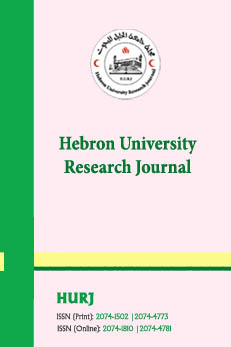Hebron University Research Journal (HURJ): B- (Humanities)
Relative Clauses: A Contrastive Analysis of Modern Standard Arabic and Turkish
- Author: Dr. Ibrahim Abushihab
- ISBN: 2074-4781
- N°: 0
- Year: 2016
-
Link:
 Relative Clauses: A Contrastive Analysis of Modern Standard Arabic and Turkish
Relative Clauses: A Contrastive Analysis of Modern Standard Arabic and Turkish
Review
Abstract:
This paper explores the differences and similarities between Turkish and Modern Standard Arabic in the area of Relative Clauses. Turkish is an agglutinative language. Its modals and auxiliaries are bound morphemes suffixed to the predicate, whereas relative pronouns in Modern Standard Arabic are used as separate words. Accordingly, the Turkish relative clause contains one of the following participle suffixes: –(y)an, -dik or (y) ecak corresponding to the following Modern Standard Arabic relative pronouns that are used as separate words: ʔallaði, ʔallaðaani , ʔallaðayni, ʔallaðiina, ʔallati, ʔallattaani ʔallatayni and ʔallaati or ʔallawaati.The paper also attempts to reveal some pedagogical implications which are helpful in teaching Arabic and Turkish as foreign languages.
الملخص
هدفت هذه الدراسة التعرف إلى أوجه التشابه والاختلاف بين اللغة العربية الفصحى واللغة التركية في مجال الاسم الموصول(Relative Clauses) . تعتبر اللغة التركية لغة التصاقية(agglutinative language) حيث تضاف لواحق الأفعال المساعدة وصيغ الأفعال إلى الأفعال والصفات والأسماء.لذلك يعد ضمير الصلة في اللغة التركية كملحق يضاف إلى الفعل(-(y) ecake, -dik, -(y)an) بينما يستخدم ضمير الصلة منفصلاً في اللغة العربية: اللذي ، اللذان ، اللذين ، اللتي ، اللتين ، اللاتي أو اللواتي.
وتظهر الدراسة بعض المجالات التربوية والتي تساعد في تدريس اللغة العربية واللغة التركية كلغات أجنبية





